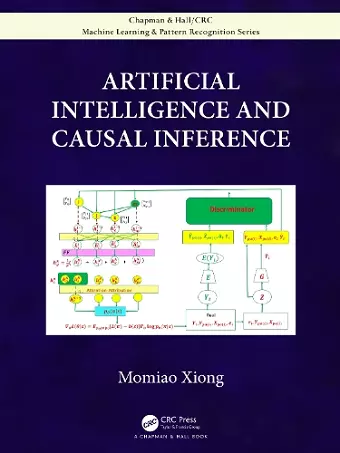Artificial Intelligence and Causal Inference
Format:Hardback
Publisher:Taylor & Francis Ltd
Published:8th Mar '22
Currently unavailable, and unfortunately no date known when it will be back
This hardback is available in another edition too:
- Paperback£44.99(9781032193281)

Artificial Intelligence and Causal Inference address the recent development of relationships between artificial intelligence (AI) and causal inference. Despite significant progress in AI, a great challenge in AI development we are still facing is to understand mechanism underlying intelligence, including reasoning, planning and imagination. Understanding, transfer and generalization are major principles that give rise intelligence. One of a key component for understanding is causal inference. Causal inference includes intervention, domain shift learning, temporal structure and counterfactual thinking as major concepts to understand causation and reasoning. Unfortunately, these essential components of the causality are often overlooked by machine learning, which leads to some failure of the deep learning. AI and causal inference involve (1) using AI techniques as major tools for causal analysis and (2) applying the causal concepts and causal analysis methods to solving AI problems. The purpose of this book is to fill the gap between the AI and modern causal analysis for further facilitating the AI revolution. This book is ideal for graduate students and researchers in AI, data science, causal inference, statistics, genomics, bioinformatics and precision medicine.
Key Features:
- Cover three types of neural networks, formulate deep learning as an optimal control problem and use Pontryagin’s Maximum Principle for network training.
- Deep learning for nonlinear mediation and instrumental variable causal analysis.
- Construction of causal networks is formulated as a continuous optimization problem.
- Transformer and attention are used to encode-decode graphics. RL is used to infer large causal networks.
- Use VAE, GAN, neural differential equations, recurrent neural network (RNN) and RL to estimate counterfactual outcomes.
- AI-based methods for estimation of individualized treatment effect in the presence of network interference. <
" Both deep learning and causal inference are fast-moving fields, and the author covers the latest topics and methods well. The book has a high ratio of equations to text, and even more technical material is contained in appendices at the end of each chapter."
Stanley E. Lazic, University of Ottawa, Series A: Statisics in Society, 2022.
"The book is suitable for use in a graduate-level course on AI. The exercises are challenging but their answers are provided in the end of the book. Not all contents are understandable by the statistics community or commonly useful in the practice of statistics. I enjoyed reading this book. I recommend this book to engineering, data science, predictive business, statistics and computing professionals."
Ramalingam Shanmugam, School of Health Administration, Texas State University, San Marcos, Texas, Journal of Statistical Computation and Simulation, 2023.
ISBN: 9780367859404
Dimensions: unknown
Weight: 1520g
368 pages